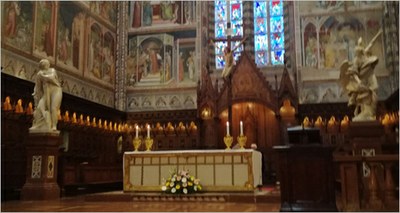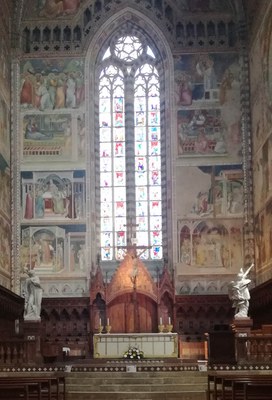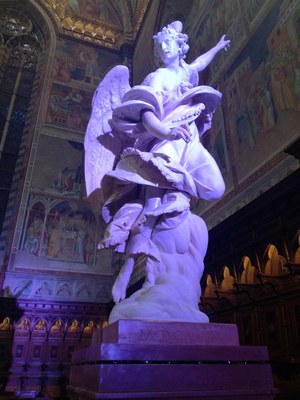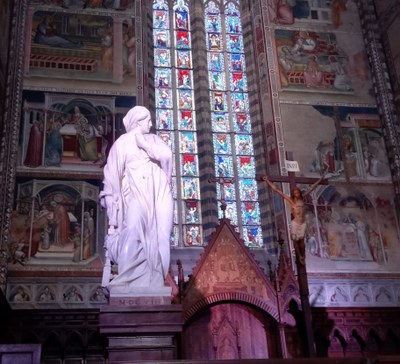Cultural Heritage: Orvieto Cathedral, ENEA anti-seismic bases end a 120-year exile for Baroque statues
23/5/2019
An evolution of the technology previously employed by ENEA for the Riace Bronzes
 After a 120-year “exile” the Annunciation group , formed of two statues made in the early 600’s by Francesco Mochi, returns to the Orvieto Cathedral thanks to Opera del Duomo, the Superintendence of Archeology, Fine Arts and Landscape of Umbria, the Higher Institute for Conservation and Restoration and ENEA, which has created two innovative anti-seismic bases to protect the statues, similar to what was done for the Riace Bronzes in the National Archaeological Museum of Reggio Calabria.
After a 120-year “exile” the Annunciation group , formed of two statues made in the early 600’s by Francesco Mochi, returns to the Orvieto Cathedral thanks to Opera del Duomo, the Superintendence of Archeology, Fine Arts and Landscape of Umbria, the Higher Institute for Conservation and Restoration and ENEA, which has created two innovative anti-seismic bases to protect the statues, similar to what was done for the Riace Bronzes in the National Archaeological Museum of Reggio Calabria.
 "As compared to the Riace Bronzes bases, equipped with passive devices maximizing seismic isolation, for Mochi’s works we have created semi-passive devices capable of unlocking the pedestal and put it in anti-seismic mode at the first sign of an earthquake ", Gerardo De Canio, the ENEA engineer who designed and prepared the bases, explained.
"As compared to the Riace Bronzes bases, equipped with passive devices maximizing seismic isolation, for Mochi’s works we have created semi-passive devices capable of unlocking the pedestal and put it in anti-seismic mode at the first sign of an earthquake ", Gerardo De Canio, the ENEA engineer who designed and prepared the bases, explained.
"We also employed different materials: steel for Orvieto and marble for the Riace Bronzes, although both are of the 'double pendulum' type, that is, made of two spherical caps that by rolling maximize seismic isolation,” De Canio said.
The Annunciation group had been on the two sides of the main altar of the Orvieto Cathedral for almost three centuries, until the "purist" view of the restoration school of the end of the 19th century removed it, together with the statues of the 12 apostles and the four patron saints. Since then the entire sculptural cycle has been placed in the dungeons of the cathedral first, then displayed temporarily in the church of Sant 'Agostino in Orvieto. The return of Mochi's artwork precedes that of the other sculptures, which will be brought back to the Cathedral by the end of the year, supported by bases assembled on an ENEA project.
 |  |
|---|---|
For more information please contact:
Gerardo De Canio, ENEA - Laboratory “Technologies for Structures Dynamic and Seismic and Hydrogeological Risk Prevention”, gerardo.decanio@enea.it
